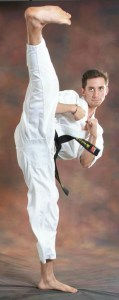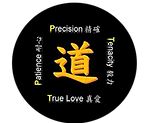Karate
What is Kyokumaru Karate?
Kyokumaru means Ultimate Circle, and it represents an exciting evolution in the martial arts. The founder of Kyokumaru Karate, Michael Mendoza grafted together principals and practices from five major martial arts, then placed them in a new light. By applying the dynamic striking principles of Chinese Boxing to the ancient katas of Okinawan Karate, the Kyokumaru student develops balance, coordination, and the ability to generate power, regardless of size or strength.
Each student will learn all of these skills and in the process they will learn about themselves. They will set personal physical goals and accomplish them. They will discover their strengths, overcome their weaknesses and become more confident in themselves and their ability to handle adversity in whatever form it takes.
Kyokumaru Ryu History
It is now over forty years since I began my journey into the deep forest of the martial arts. Indeed, it can be said to be the most consistent element in my life: preceding my wife and children by some eighteen years. Over the course of time, I have seen many changes in trends, perceptions and practice of the martial arts. To one who understands the Way, change is a given. In regard to the martial art of Karate however, as we embrace innovation, great care must be taken to keep certain elements the same.
The transformation that Okinawan Karate underwent in order to facilitate its export to mainland Japan (and eventually the rest of the world), has proven to be a double-edged sword. Some innovators believed that standardization required simplification. In my opinion, this mindset was the beginning of the erosion of the art. Expansion led inevitably to diffusion. Circles became lines and without a fundamental understanding of spherical dynamics, force replaced energy as the effective element of technique.When Mas Oyama published his two great works, “What is Karate” and “This is Karate” in the 1950’s, Japanese karate had so detached from the concepts of circular techniques that he included them only under the heading of “special techniques”. He states, “though they are highly developed techniques, the karate masters of Japan and Okinawa have ignored them. Today our school and the Kempo schools are probably the only ones who teach them”

